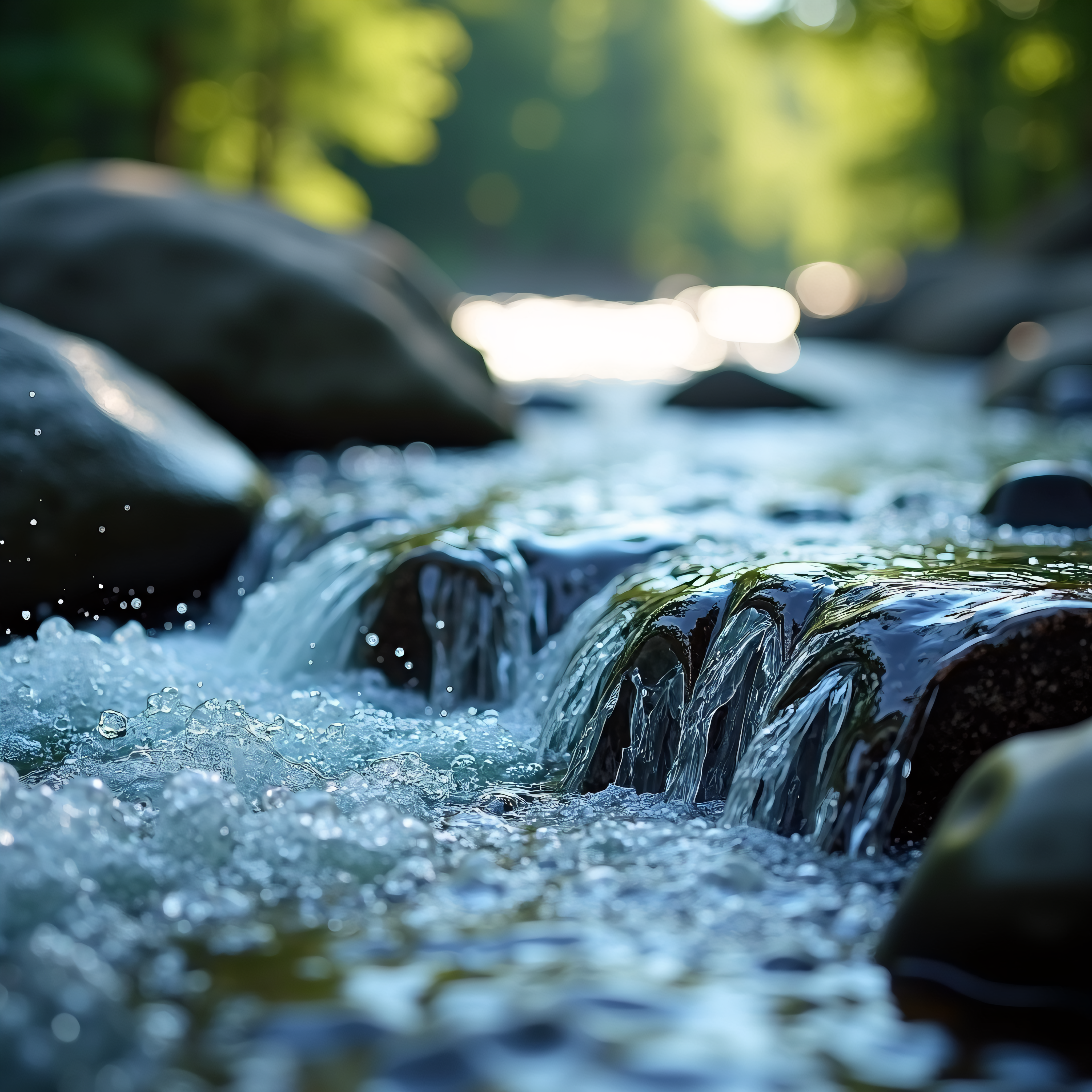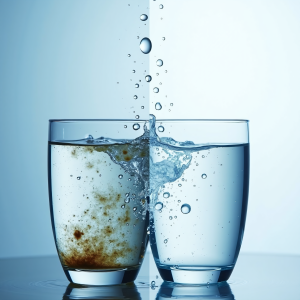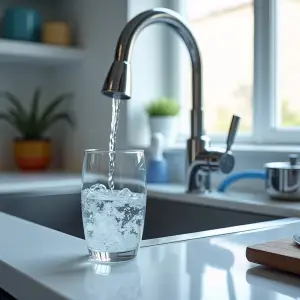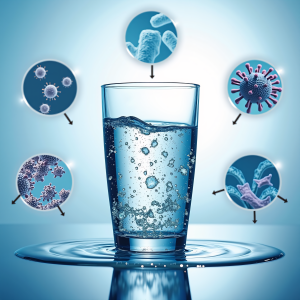reading time: approximately 7 minutes
Every day, we turn on the tap expecting clean, safe drinking water. But the reality is, what flows from your faucet isn’t always as pure as you think. Shockingly, the Environmental Protection Agency (EPA) estimates that even municipal water systems can contain over 85 contaminants – from agricultural runoff and industrial pollutants to lead and bacteria. That’s a concerning thought, isn’t it? While filtration simply separates particles, a purifier goes a step further, actively removing harmful substances to make your water truly safe for consumption.
Navigating the world of water purification can be overwhelming. From ultraviolet (UV) lights and reverse osmosis (RO) systems to activated carbon filters and even portable Steripens, the options seem endless. Many consumers find themselves lost in a sea of technical jargon and conflicting information, unsure which system best fits their lifestyle and, more importantly, their water quality needs.
This comprehensive guide will demystify the process of choosing a water purifier. We’ll break down the common purification methods, explaining how each one works and what contaminants it effectively targets. We’ll examine how factors like your water source, household size, and budget should influence your decision.
Understanding Water Contaminants
The first step to choosing the right purification system is understanding the possible threats present in your water. These threats fall into three main categories: biological, chemical, and physical. Biological contaminants include bacteria (like E. coli), viruses, and protozoa (like Giardia and Cryptosporidium), often originating from animal and human waste. Chemical contaminants are more diverse, ranging from chlorine and chloramine (added by municipalities for disinfection) and heavy metals like lead and mercury (from industrial runoff or aging pipes) to pesticides, herbicides, and volatile organic compounds (VOCs). Physical contaminants include sediment, rust, and dirt, which can affect taste and appearance, but also harbour other harmful substances. The presence of these contaminants isn’t always visible, tasteless, or odorless, highlighting the importance of testing your water. Investing in a reliable water testing kit can reveal specific contaminants present in your water supply, paving the way for a targeted purification approach. Check out our blog post on A Complete Guide to Home Water Quality
Exploring Types of Water Purifiers
Once you’re aware of potential contaminants, exploring types of water purifiers becomes a more focused process. There are broadly four main types:
- Whole-House Systems: These are installed on the main water line entering your home, treating all water used for drinking, bathing, and appliances. They’re a significant investment but offer comprehensive protection and peace of mind. A whole-house system ensures every glass of water and every shower is free from contaminants.
- Point-of-Use (POU) Systems: These focus on purifying water at a single tap, typically the kitchen sink. Popular options include faucet filters, countertop filters, and under-sink systems. POU systems are more affordable and easier to install than whole-house solutions, making them ideal for renters or those with limited budgets.
- Compact Water Purifiers: Typically countertop models, these often feature multi-stage filtration, combining sediment filters, carbon filters, and sometimes even RO membranes. They are convenient for smaller spaces but have limited storage capacity. These are a great option for apartments or for supplemental purification.
-
Portable Water Purifiers: Essential for travel, camping, and emergency preparedness, portable purifiers range from pump filters and gravity filters to chemical treatments and UV sterilizers (like those manufactured by Steripen/Amazon).
Source: Steripen
Comparison of Purification Methods
Let’s get into the specifics with a comparison of purification methods. Each method targets different contaminants:
| Purification Method | Contaminants Removed | Pros | Cons |
|---|---|---|---|
| Reverse Osmosis (RO) | Dissolved solids, lead, fluoride, arsenic, nitrates, many chemicals. | Highly effective, produces very pure water. | Slow flow rate, water waste (typically 3-4 gallons waste for every gallon purified), requires storage tank. |
| Ultraviolet (UV) | Bacteria, viruses, protozoa. | Effective disinfection, doesn’t add chemicals to the water. | Doesn’t remove sediment, chemicals, or heavy metals. Requires electricity. |
| Activated Carbon Filtration | Chlorine, chloramine, sediment, VOCs, some pesticides. | Improves taste and odor, relatively inexpensive. | Less effective on dissolved solids or heavy metals, filter needs frequent replacement. |
| Sediment Filtration | Sediment, rust, dirt. | Protects other filters, improves water clarity. | Doesn’t remove dissolved contaminants or microorganisms. |
Choosing the ‘best’ method isn’t straightforward. If lead is a concern, RO or a specialized lead filter is necessary. For bacterial contamination, UV purification is ideal. For improving taste and odor, carbon filtration is a good starting point. Often, a combination of methods is the most effective, like a sediment filter followed by carbon and RO. A multi-stage system offers a comprehensive approach to water treatment and ensures the highest quality potable water.
Check out our Blog on The Ultimate Guide to Reverse Osmosis for a Healthier Home.
Check out our Blog on A Deep Dive into UV Water Purification
Check out our Blog on A Comprehensive Guide to Gravity Water Purifiers
Insight for Travel & Outdoor Use
Finally, let’s consider insight for travel & outdoor use. For hiking and camping, portable water filters or purification tablets are essential. UV Steripens, as previously mentioned, offer a chemical-free solution, but require batteries and clear water. Always follow the manufacturer’s instructions carefully. For international travel, consider a portable filter or purifier designed for the specific contaminants prevalent in your destination. Boiling water for one minute also effectively kills most harmful microorganisms. When traveling abroad, always sanitize your drinking water due to varying water quality standards.
Maintenance Tips
Regular filter replacement is paramount. The frequency depends on the filter type and your water usage. RO membranes typically last 2-5 years, carbon filters uring 6-12 months, and sediment filters 3-6 months. Keep a log of replacement dates to stay on track. Clean the purifier housing regularly to prevent bacterial growth. Following the manufacturer’s maintenance schedule will ensure your purifier operates at peak efficiency and continues to provide you with safe, clean drinking water. Regularly checking your system’s performance is crucial for maintaining optimal water purification.
Check out our Blog on Water Purifier Maintenance: A Complete Guide to Clean, Safe Drinking Water
Frequently Asked Questions About Water Purifiers
Q: What is the difference between water filtration and water purification?
While often used interchangeably, there is a key distinction. Water filtration physically removes particles and sediment from water, like a sieve. Water purification, on the other hand, actively removes harmful substances like bacteria, viruses, and chemicals, making water safer to drink. A purifier is therefore a more comprehensive solution than a simple filter.
Q: How do I know what contaminants are in my water?
The best way to determine the contaminants in your water is to conduct a water quality test. You can purchase home testing kits or hire a professional laboratory to analyze your water supply. This information will help you choose the appropriate water treatment system.
Q: What’s the lifespan of a typical water purifier?
The lifespan of a water purifier varies depending on the type and quality of system, and water usage. Whole-house systems can last 10-15 years with proper maintenance; POU systems typically last 5-7 years. Regular maintenance including filter replacements is vital to extending the lifespan your **purification system.
Q: Is a water softener a purifier?
No, water softeners do only remove minerals like calcium and magnesium causing hard water – they do not remove harmful contaminants like bacteria or lead. A softener can actually complement a purification system protecting it from scale buildup.
Conclusion: Securing your water, securing your health
Looking ahead, likely continue innovation technology. Expect smarter real-time systems’ monitoring, more sustainable reducing plastic waste, affordable options bringing purification wider audience. Nanotechnology advanced oxidation also processes promising effective contaminant removal.
Ready take next step cleaner, healthier water? Browse expertly curated selection top-rated water purifiers take advantage exclusive discounts! Check out our blog post on Kent, Aquaguard , Gravity filters and Livpure Or, still unsure of filter system right you, check out our blogs on A Comprehensive Guide to Water Purification



